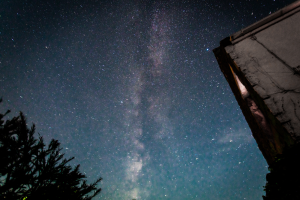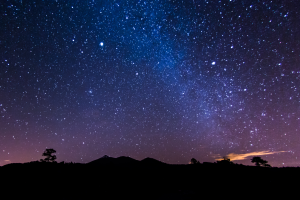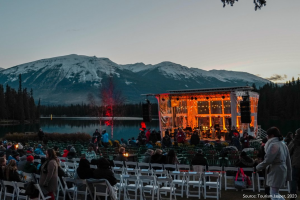by Andres Clavier, Freshwater Stewardship Education Intern
Light pollution, often overlooked, is an environmental concern that affects our night skies, ecosystems, and even human health. Artificial light pollution disrupts the natural order of ecosystems, affects the behaviour of nocturnal animals, and disrupts human sleep cycles. Globally, nations are taking notice and implementing measures to combat the growing issue of over-illuminated nights. Here are some of the notable measures being taken around the world to combat light pollution:
1. The Isle of Sark, Channel Islands
Designated as the world’s first Dark Sky Island, Sark’s uniqueness is not just limited to its lack of public street lights, cars, or paved roads. They have cultivated a culture where residents and visitors traverse using torches fitted with red filters, substantially cutting down white light emission.

2. South Korea
Korea has displayed dedication to tackling light pollution by introducing the ‘Light Pollution Prevention Act’ in 2013. Cities, including the capital, Seoul, have taken significant strides. They are incorporating country-wide outdoor LED (light-emitting diode) lights that resemble the glow of moonlight, and have launched public awareness campaigns emphasizing the importance of natural darkness for human health and sleep.
3. Flagstaff, Arizona, USA
Flagstaff leads by example, being recognized as the world’s first International Dark Sky City in 2001. Their journey started in the 1950s when they began shaping outdoor lighting codes to reduce light pollution. Their commendable initiatives include restricting light levels according to the requirement, mandating full cut-off fixtures to restrict light from spilling upwards, and reducing redundant lighting (especially where safety is not compromised).
4. Tenerife, Canary Islands, Spain
Tenerife is a testament to how legislation can keep our skies pristine. With the Law for the Sky, enacted in the 1980s, the island has minimized light, atmospheric, and radio wave disturbances. This ensures astronomers can peer into the universe without interference. The government of the Canary Islands also promotes and encourages educational programs in collaboration with local observatories and provides educational materials to tourists, emphasizing the island’s commitment to maintaining its pristine skies.

5. Chile
Home to several of the world’s state-of-the-art observatories, regions in Chile, such as Antofagasta and Coquimbo, have stringent regulations covering aspects from street lighting, to building colorations, to reduce light reflection. The government of Chile also engages communities and schools in stargazing events and educational programs across the country to foster national participation.
6. Jasper National Park, Alberta, Canada
In the Canadian Rockies lies Jasper National Park. Recognized as one of the world’s largest accessible Dark Sky Preserves, their commendable efforts include Hosting the Dark Sky Festival every October, enforcing specific lighting guidelines for different zones within the park, and prioritizing public education on the significance of dark skies (especially for nocturnal wildlife).

As Canadians, we have vast landscapes and pristine wilderness that can benefit from similar measures against light pollution. By learning from global examples, we can lead the way in preserving our night skies and natural ecosystems, ensuring future generations can enjoy them. Learn more about other Dark-Sky Sites on DarkSky International’s website and Royal Astronomical Society of Canada’s website.
Watersheds Canada’s education toolkit will help you protect our night skies, ensure safer habitats for wildlife, reduce energy consumption, and improve human health by reducing disrupted sleep patterns caused by excessive artificial lighting. Protecting our freshwater areas and the wildlife that live there is important, and it is our collective responsibility to harmonize our actions accordingly. You can do your part by sharing the resources and information from Watersheds Canada’s light pollution awareness campaign!
References
International Dark-Sky Association. Flagstaff, Arizona Dark Sky Community. Dark Sky. Retrieved from https://darksky.org/places/flagstaff-arizona-dark-sky-community/
Kennedy, M. (2011, January 31). Sark was named the world’s first dark sky island. The Guardian. Retrieved from https://www.theguardian.com/uk/2011/jan/31/sark-first-dark-sky-island
Kim, G., Lim, H. S., & Kim, K. R. (2015). Policy and status of light pollution management in Korea. Indian Journal of Science and Technology, 8(S4).
Las Campanas Observatory. (n.d.). The protection of the dark skies. Retrieved from https://www.lco.cl/the-protection-of-the-dark-skies/
Socas-Navarro, H., & Martínez Pillet, V. Law for the Sky. Instituto de Astrofísica de Canarias. Retrieved from https://www.iac.es/system/files/documents/2019-09/Tanja_article_0.pdf
This education toolkit is generously funded by:

Education toolkit reviewed by:

